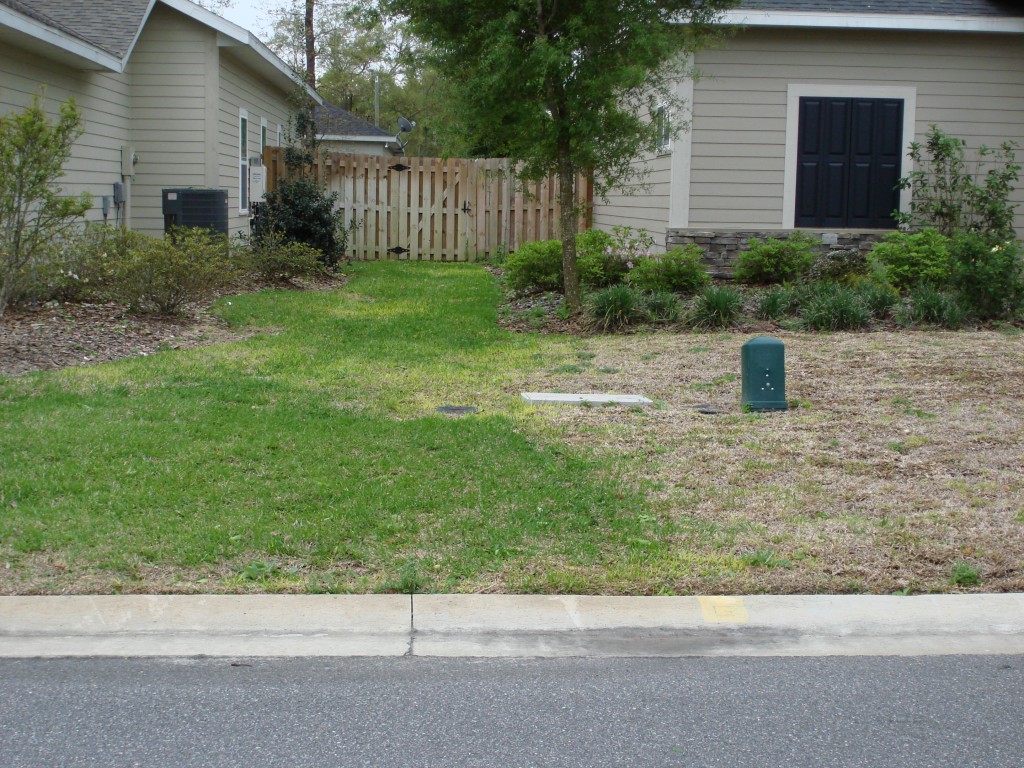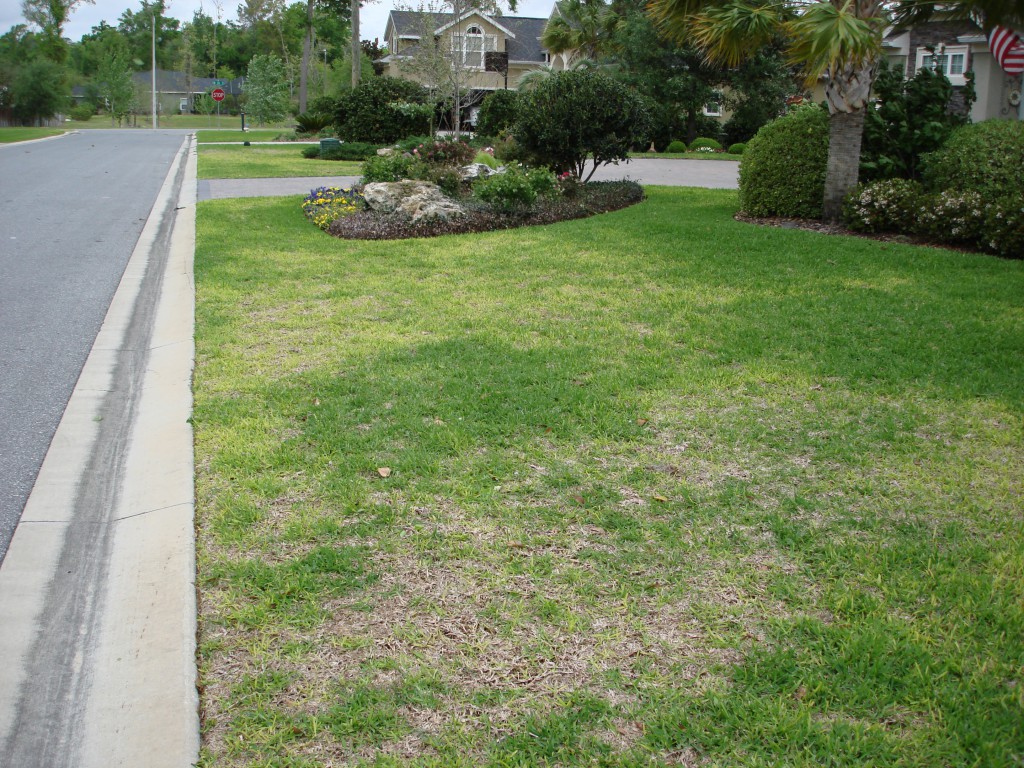
Winter kill. Photo Credit: J. Bryan Unruh
Author: J. Bryan Unruh, Ph.D. – Extension Turf Specialist
Spring has sprung! With that comes the urge to ramp up spring landscaping projects – planting a garden; replenishing the mulch in the beds; planting summer annuals for color; preventing that nasty crabgrass from germinating; and fertilizing the lawn. STOP! WAIT! TIMEOUT!
“Weed-and-Feed” products are commonly marketed in most garden centers and box stores. However, the use of weed-and-feed products should largely be avoided in Northwest Florida. Here’s why. In northwest Florida, crabgrass typically germinates around March 1st – give or take a couple of weeks based on spring conditions (warmer = earlier) or whether you reside along the coast or in the northern reaches of your county. Consequently, with March almost behind us, we are beyond the window of opportunity to control crabgrass before it germinates. Crabgrass control measures now must rely on postemergence (after the weed germinates) options. For all of our turfgrasses, except Bahiagrass and St. Augustinegrass, a number of options are available. Refer to https://edis.ifas.ufl.edu/EP141 for more information. There are no postemergence crabgrass herbicides registered for use on St. Augustinegrass!
The “feed” side of “weed-and-feed” provides plant nutrition – through the application of fertilizer. However, UF/IFAS does not recommend lawn fertilization prior to April 15th in northwest Florida. There are a couple of reasons why UF/IFAS doesn’t recommend early spring fertilization. First, it is very common for portions of northwest Florida to experience heavy frosts through March and into the first week of April. We desire for the turf to remain “at rest” until after the first week of April. Fertilizing prior to April 15th nearly guarantees that the lawn will be awakened making it prone to severe damage should a late spring frost occur (Figure 1). Second, UF/IFAS scientists hypothesize that the turfgrass root system (the part you can’t see) lags behind the shoot system (the part you can see). When fertilizer granules are applied to the lawn, the granules dissolve and the nutrients become part of the soil solution (soil water + dissolved substances). Liquid applied fertilizers go directly into the soil solution. If the root system is not ready to absorb the nutrients, the nutrients are likely to leach below the rootzone and can potentially move into the groundwater as a pollutant. UF/IFAS research conducted near Pensacola and south of Gainesville conclusively showed that fertilizer applied around March 1st had elevated nutrient leaching. Conversely, when fertilizer is properly applied to a healthy lawn, the turf will assimilate all the applied nutrients and not cause environmental problems.

Patchy winter kill. Photo Credit: J. Bryan Unruh
What about “weed-and-feed” products for broadleaf weeds such as dollarweed (https://edis.ifas.ufl.edu/EP389) or Virginia buttonweed (https://edis.ifas.ufl.edu/EP386)? Generally, these weeds do not inhabit the entire property – they appear only in patches scattered throughout the lawn. Why then, would you apply chemicals to an entire lawn when only a small area needs to be treated? The answer is simple – you shouldn’t. Under this scenario, it would be best to use “Ready-to-Use” products or make a mix from a concentrated product and deliver through a pump-up type sprayer.
Bottomline – go ahead a start your spring gardening. Plant your garden. Refresh the plant beds. Plant those annuals and perennials to give you the color you want. If you haven’t fertilized yet – great. Wait until mid-April or later. If you have already fertilized and your lawn is green – hope that we don’t get a late-season frost!
- Growing Healthy Palms Workshop - July 20, 2016
- It is time to monitor for Rose Rosette Disease in Florida - May 24, 2016
- Too Late yet Too Early - March 24, 2016